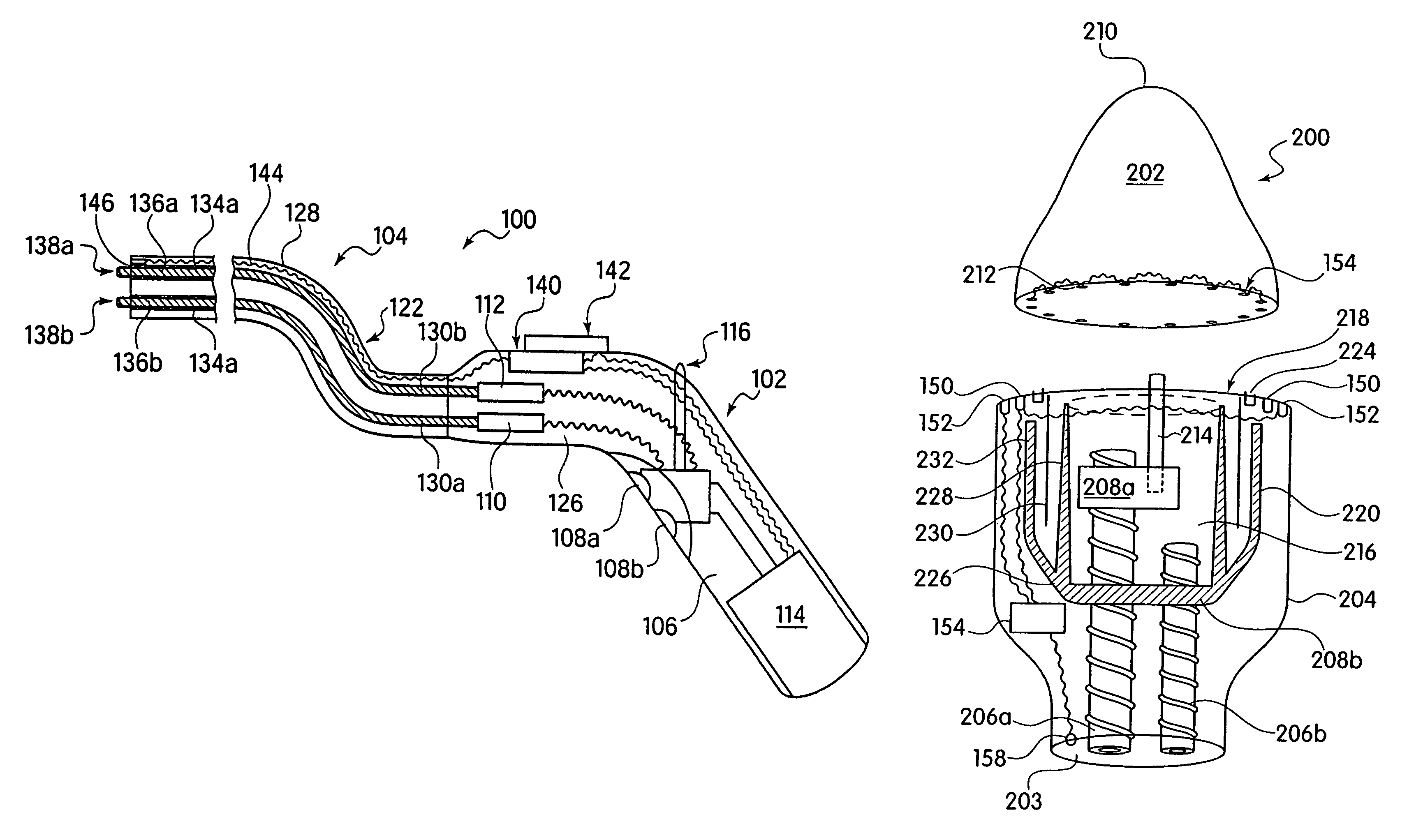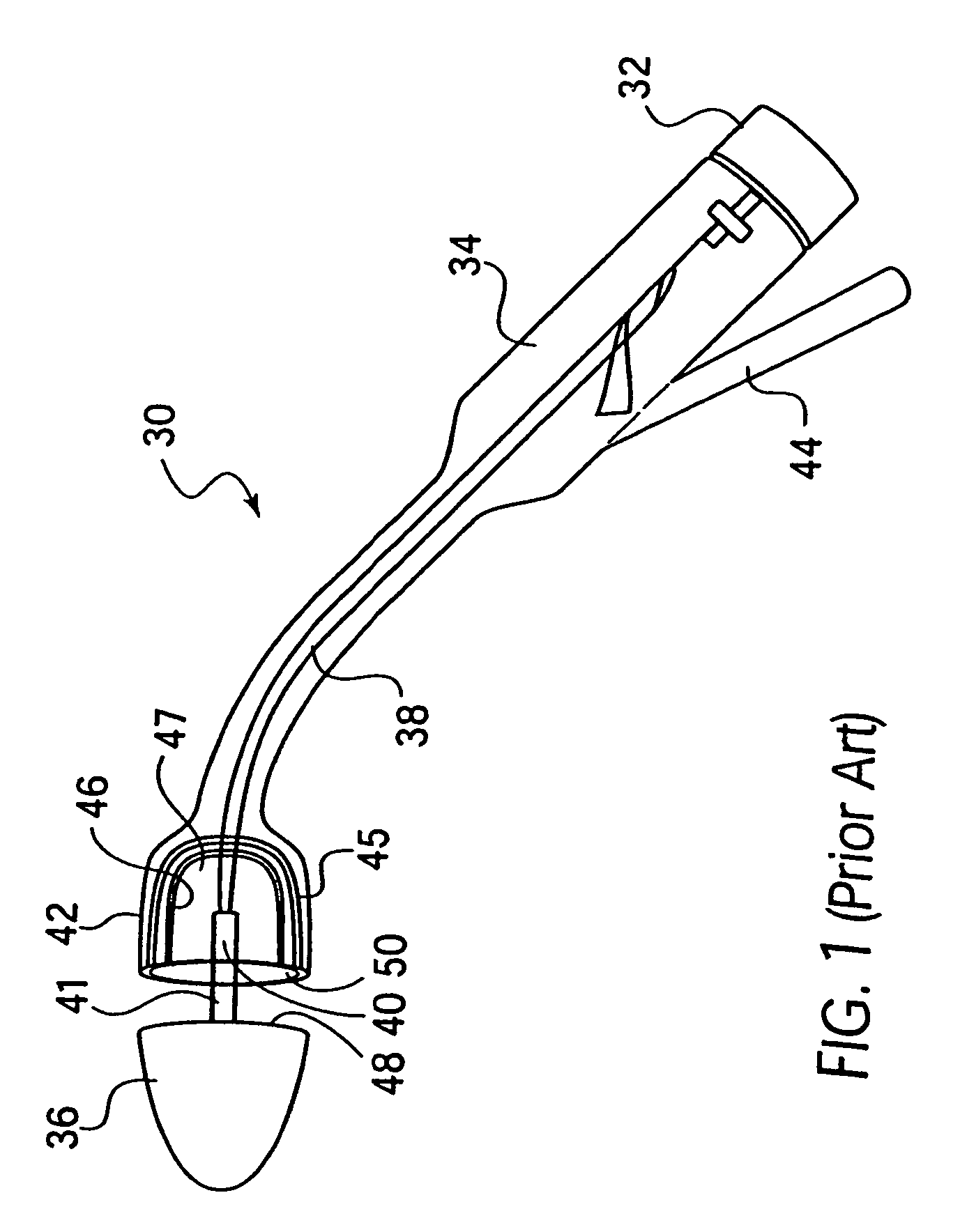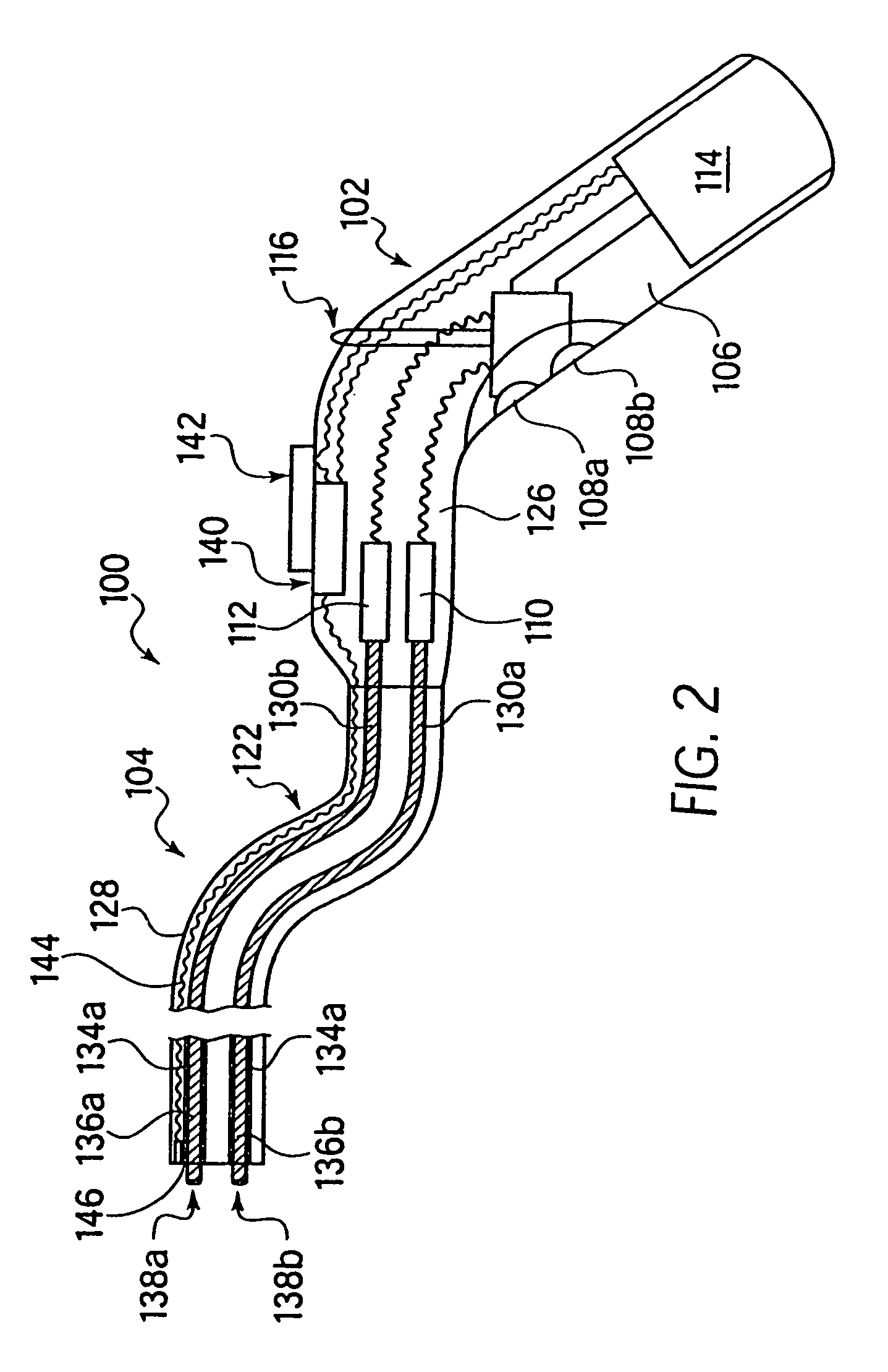Electromechanical driver and remote surgical instrument attachment having computer assisted control capabilities
a technology of electronic motors and surgical instruments, applied in the field of medical devices, can solve the problems of increased unusable standard instruments, and special accommodations, and achieve the effect of improving the risk of contamination of surrounding tissues with bowel contents
- Summary
- Abstract
- Description
- Claims
- Application Information
AI Technical Summary
Benefits of technology
Problems solved by technology
Method used
Image
Examples
Embodiment Construction
[0042]While the present invention will be described more fully hereinafter with reference to the accompanying drawings, in which particular embodiments are shown, and with respect to methods of surgical use, it is to be understood at the outset that persons skilled in the art may modify the invention herein described while achieving the functions and results of this invention. Accordingly, the descriptions which follow are to be understood as illustrative and exemplary of specific structures, aspects and features within the broad scope of the present invention and not as limiting of such broad scope. Like numbers refer to similar features of like elements throughout.
[0043]Referring now to FIG. 2, with respect to the electromechanical driver 100, the driver has a handle portion 102 and a flexible drive shaft portion 104. The handle 102 includes a portion which is shaped in a manner which is easily gripped by the surgeon operator, for example, in the embodiment provided herein the han...
PUM
 Login to View More
Login to View More Abstract
Description
Claims
Application Information
 Login to View More
Login to View More - R&D
- Intellectual Property
- Life Sciences
- Materials
- Tech Scout
- Unparalleled Data Quality
- Higher Quality Content
- 60% Fewer Hallucinations
Browse by: Latest US Patents, China's latest patents, Technical Efficacy Thesaurus, Application Domain, Technology Topic, Popular Technical Reports.
© 2025 PatSnap. All rights reserved.Legal|Privacy policy|Modern Slavery Act Transparency Statement|Sitemap|About US| Contact US: help@patsnap.com



